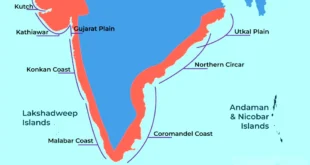- The study, published in Nature Geoscience, highlighted this through a global map of 168 countries facing pollution risk caused by 92 chemicals commonly used in agricultural pesticides.
- The study examined risks to soil, the atmosphere and surface and ground water.
Findings:
- Around 64 per cent of land used for agriculture and food crops is at risk of pesticide pollution and almost a third of these areas are considered to be at high-risk, a global study of agricultural land across 168 countries has revealed.
- Asia houses the largest land areas at high risk of pollution in countries like China, Japan, Malaysia, and the Philippines. Some of these areas are considered ‘food bowl’ countries, feeding a large portion of the world’s population.
- Globally, 34 per cent of the high-risk areas are in high-biodiversity regions, 19 per cent in low-and lower-middle-income nations and five per cent in water-scarce areas.
- Global pesticide use is expected to increase as the global population heads towards an expected 8.5 billion by 2030.
Impact of pesticides:
- Pesticides can be transported to surface waters and groundwater through runoff and infiltration, polluting water bodies, thereby reducing the usability of water resources.
- Overuse of pesticides is concerning as it might tip the balance, destabilize ecosystems and degrade the quality of water sources that humans and animals rely on to survive.
SOURCE: THE HINDU,THE ECONOMIC TIMES,MINT
 Chinmaya IAS Academy – Current Affairs Chinmaya IAS Academy – Current Affairs
Chinmaya IAS Academy – Current Affairs Chinmaya IAS Academy – Current Affairs



